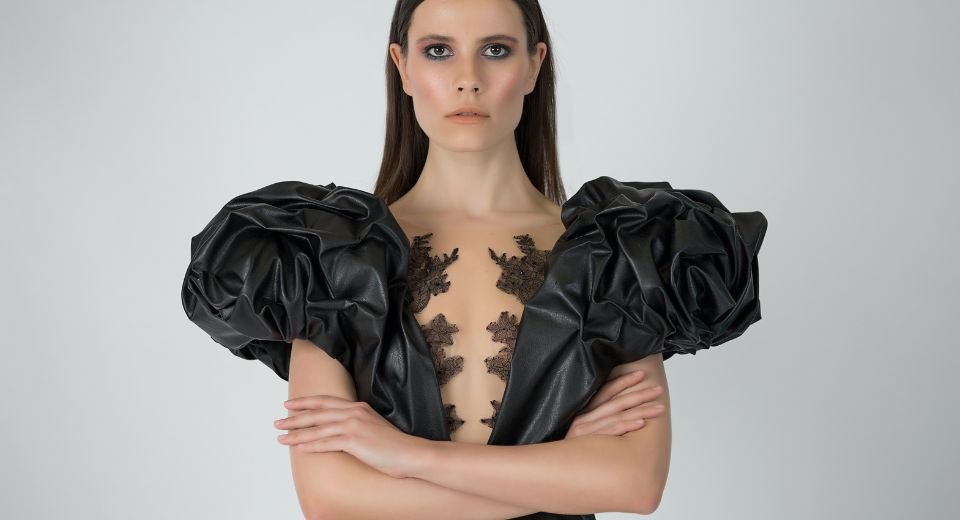HQ Team
May 11, 2023: Fiona Bell, a researcher at the University of Colorado, Boulder, has made clothes for haute couture fashion from a warm glass of kombucha, a beverage made from the fermentation of sugared tea.
Bell, who earned her doctorate in creative technology and design from CU Boulder, researches biodesign, the intersection of biology, food science, and materials engineering.
Kombucha, which is thought to have originated in China, is produced by fermentation of sugared tea using a symbiotic culture of bacteria and yeast (SCOBY) commonly called a “mother” or “mushroom.”. The microbial populations in a SCOBY vary.
Mason jars and plastic storage containers are filled with brown slurries. They smell like vinegar and have a thin layer of slimy, almost skin-like material growing on top, or SCOBY.
Kombucha leather
The researchers harvest and dry the SCOBY to make a material called “kombucha leather,” a process that can take weeks from start to finish. They crafted a “breastplate” shirt to show what it could do. “It’s definitely different,” Bell said. “But I think there’s an inherent beauty to this breastplate.”
It also has embedded LED lights that flick on whenever you hug the wearer. Bell said that kombucha chic might not be everyone’s cup of tea.
As kombucha ferments, the microbes naturally produce the SCOBY, a gooey layer that’s rich in cellulose, Ms Bell said. “If you scoop out that slime and treat it with olive or coconut oil, the SCOBY will dry into a sheet that’s less than a millimeter thick but surprisingly hardy. It looks and feels a lot like animal leather.”
In all, it took Bell and her colleagues over three months to make their kombucha leather breastplate, laying it down strip-by-strip.
Electrical signals
“I learned that I have to slow down to the pace of the organism,” Bell said. “I have to wait for four weeks for a layer to grow, and once I have a layer, I need to know exactly how I’m going to use it.”
The researchers coated one of their layers of SCOBY in activated charcoal, a biodegradable substance that can register and carry faint electrical signals like a metal conductor. Touch that part of the breastplate with your bare skin, and a series of LED lights embedded in the material will glow with life.
She sees the project as an antidote to “fast fashion,” the modern embrace of clothing that can be produced quickly, cheaply, and just as easily thrown away.
The material will degrade in the soil in about a month. One can also easily remove and reuse all of the electronics, Ms Bell said.
Her work is fashioned at the pace of bacteria and yeast.
‘Slow fashion’
“It’s slow fashion,” she said. “It taught me to let go because it was a living thing. Sometimes, imperfections would form in the leather like bubbles or dark spots where clusters of yeast would gather. I had to accept that it was the organism, bringing its own voice into the design.”
As an undergrad at Santa Clara University in California, Ms Bell learned how to brew her own kombucha. It was her advisor at CU Boulder, Mirela Alistar, an assistant professor who leads the Living Matter Lab, who tipped her off to all kombucha could do.
“She said, ‘you know, you can make stuff with the SCOBY,’” Bell said. “My mind was blown. Up until that point I had thought it was just a waste product of the fermentation process.”
The team isn’t the first to make clothes out of kombucha leather. Designer Suzanne Lee debuted a line of “BioCouture” bomber jackets, which she crafted using similar materials.
For about $2,000, you can even buy a Stella McCartney Frayme Mylo shoulder bag, a faux-leather accessory made from mycelium, the root-like structures of many fungi.



